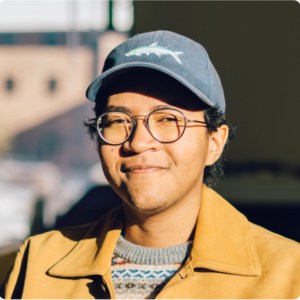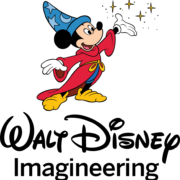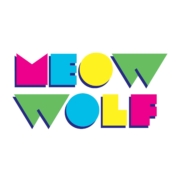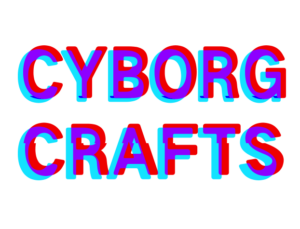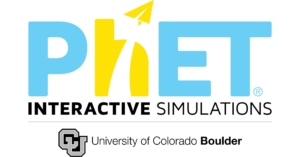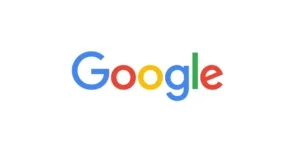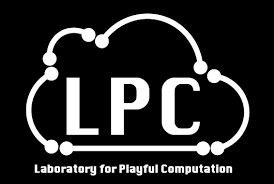Hello, I’m Chris Hill
Creative technologist, computer scientist, interaction designer, and human augmentation enthusiast.
View My CV
View my open-source work here:
Where I Work
Currently, I work at Disney Imagineering R&D – “Walt Disney Imagineering embodies a world-class design firm, premier development company, extraordinary storytelling studio, and cutting-edge innovation lab — all rolled into one. Home to an overwhelming breadth of expert talent from around the globe, Imagineers partner closely with colleagues from across The Walt Disney Company to bring the most awe-inspiring new worlds and cherished characters to life.”
Previously, I worked at Meow Wolf, Denver – “Meow Wolf is an arts and entertainment company based in Santa Fe, New Mexico. We create immersive and interactive experiences that transport audiences of all ages into fantastic realms of story and exploration.”
Previously, I collaborated with the Exertion Games Lab – “The Exertion Games Lab researches the future of play and games in order to understand how to design better interactive experiences, in particular, we focus on games that put the human body in the center of the experience. We draw from interaction design, sports, psychology, human-computer interaction (HCI), and embodiment thinking to contribute to human-player interaction.”
Previously, I worked in the THING Lab – “The Transformative Human Interfaces for the Next Generation (THING) Lab, directed by Daniel Leithinger, employs shape-changing materials, novel sensors, and unique design methods to make digital information tangible, paving the way for a new generation of interactivity that goes beyond sight and sound.”
Previously, I started a student research group called Cyborg Crafts – “Cyborg Crafts is a student-organized collaborative group comprised of five graduate students at the University of Colorado Boulder’s ATLAS Institute. Our group explores both what’s on our minds and in our bodies. This approach challenges us to explore and integrate what are often seen as opposing themes: synthetic/organic, research/maker and craft/engineering. Cyborg Crafts’ researchers are committed to developing open-source, accessible projects to promote human augmentation. We take a craft approach to design, and our focus is on easily sourced materials and replicable documentation. All of this translates to hackable projects that can be enjoyed by both novice and experienced engineers.”
Previously, I worked with PhET Interactive Simulations as a research assistant – “PhET provides fun, free, interactive, research-based science and mathematics simulations. We extensively test and evaluate each simulation to ensure educational effectiveness. These tests include student interviews and observation of simulation use in classrooms. The simulations are written in Java, Flash or HTML5, and can be run online or downloaded to your computer. All simulations are open source (see our source code). Multiple sponsors support the PhET project, enabling these resources to be free to all students and teachers.”
Previously, I worked in the Sheppard Craft Technology Lab as a research assistant – “Directed by Ann Eisenberg, Craft technology is our term for the interweaving of computation with craft materials. This blending can take many forms, including the application of specialized software to aid in the design and construction of crafts (such as mechanical toys and paper sculpture) and in the creation of craft objects with embedded intelligence. Our particular interests lie in the educational realm – that is, we are especially interested in extending the landscape of children’s craft activities.”
Previously, I worked for Google as a mentee in their CSRMP program – “As part of our efforts to broaden participation in CS research careers and make them more accessible to everyone, we accepted 37 outstanding undergraduates to Google’s CS Research Mentorship Program (CSRMP) this fall. The program encourages students to pursue graduate and doctorate-level CS studies by matching them with Google mentors. As the students work toward their goals, they attend a CS research conference and travel to Mountain View as guests for the PhD Fellowship Summit.”
Previously, I helped start CU Technology for Extreme Environments club as the project manager – “The purpose of the CU Technology for Extreme Environments Club is to explore, design, and develop assistive technologies for extreme operational environments like spaceflight. The primary technological focus is creating Heads-Up Displays, or HUDs, which is where virtual information is presented to an operator directly in their field of view. In this way, an astronaut can easily access all of the data on their spacesuit consumables like remaining oxygen, work through procedures that include pictures and videos demonstrating how to perform complicated steps, and navigate from the airlock to their workspace. We design these systems using Unity, C#, the Microsoft HoloLens, and other peripheral hardware devices to control the HUD, such as EMG boards. The main efforts of the group are focused on the NASA SUITS Design Challenge that centers on building HUDs for future spacesuits that will go to the Moon, Mars, and beyond. A second core focus of our organization is STEM outreach, generally for grades K-12. On average, we participate in about one event per month, ranging from a short lunchtime presentation on the NASA SUITS challenge to multi-day trips involving interactive augmented- or virtual-reality experiences.”
Previously, I worked in the Lab for Playful Computation as a research assistant – “We believe that learning should be creative, driven by curiosity, and full of joy. We believe that young people have beautiful ideas, and that education should value and nurture them. We believe that science, technology, the humanities, and the social sciences are all important ways of understanding the universe around us, and that approaches from these fields should inform each other. We create and study new learning experiences and technologies to realize these values.”

